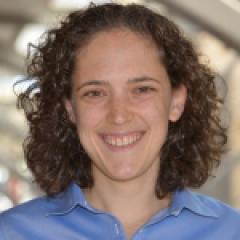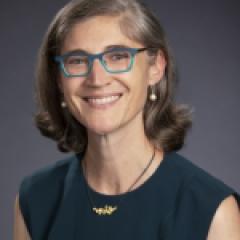Shanker Blog: Painting a Portrait of Professional Learning for the Science of Reading
Assumptions about homogeneity are baked into schools and schooling; grade levels are sorted by student age, classrooms by numbers of desks, and sets of standards specifying what to teach and when students will reach proficiency. While most people understand and would agree that students’ needs and rate of learning vary greatly, we seem to forget this when it comes to adult learning. Based upon this, we emphasize not all teachers need the same learning experiences and environments to develop expertise.
Teachers differ in the nature of their personal and professional experiences, in the assets and dispositions they bring to the job, in the role they play in their particular schools, and in their specific goals as educators. Thus, the professional learning opportunities available to them should not be one size fits all. This is easier said than done. Differentiating professional learning in any domain is complex, and reading is no exception. It is easier to book a speaker and order some materials than it is to design opportunities for professional learning that meet each educator where they are. Yet, for Science of Reading (SOR) based reforms to be implemented in ways that make a difference for students, coherent, contextualized, and engaging professional development on the SOR is crucial.
As a wave of reading reform, legislation related to the SOR represents an attempt to focus instruction on the explicit teaching of foundational skills, based on research that affirms the importance of phonemic awareness and phonics in beginning reading. Many SOR reforms aim to boost the knowledge and skills of individual teachers, with less attention to the ecosystem of schooling where these teachers are embedded, or to how leaders and teachers collaborate to improve instruction. SOR reforms often mandate that districts adopt new curricula and teachers teach with these materials. But implementing SoR reforms is complex, as it simultaneously involves individual learning and organizational change. Therefore, as we have described here, here, and in this podcast, it is crucial to align professional development, curriculum, and leadership – the three pillars of the reading infrastructure. These pillars enable instructional improvement by creating organizational conditions for systemic change. In this post, we concentrate on the professional development pillar.
Regardless of their state, district, or school context, no teacher is experiencing current SOR initiatives as a blank slate. Instead, each teacher brings prior knowledge, experiences, dispositions, and orientations towards instruction as well as towards change; these swirl together to color their engagement with SOR. Here, we apply a metaphor from watercolor painting:
If each teacher is a paintbrush, and each professional experience is a different color, then, when they dip into the colors of SOR reform, or SOR professional development activities and experiences, they will create different colors, shades, and designs based on the colors they have previously tried, used, or let go.
In other words, the nature of teachers’ learning about SOR will vary based on previous experiences and understandings. Moreover, each teacher’s enactment of SOR may look and sound different as they emphasize and include aspects that resonate with their understandings and priorities.
When designing SOR PD, it is vital to acknowledge the rainbow of variability of teachers within a context. Inside one school, there are novice and veteran teachers, there are teachers prepared by different teacher preparation programs during different time periods, there are teachers newer to the site and/or to the specific district. There are teachers who have had experiences with similar curricula and those who have only engaged in approaches that are distinctly different. As a result, inside one school adopting SOR, there are teachers who bring different combinations of PD, different sets of instructional materials, and different experiences with a revolving rolodex of district leaders, principals, and coaches, each with their own vision of what successful literacy instruction entails.
Indeed, some teachers experience so many changes in materials, priorities and leadership that their rooms are littered with piles of instructional materials–some still shrink-wrapped on shelves, or laying in stacks of handouts and binders. Other teachers cannot remember the last time they experienced PD focused on literacy. And, down the hall, a set of teachers may currently be working closely with a district, school, or reform-organization based reading coach. For many teachers, PD has been a hodgepodge of learning experiences, mostly featuring guest speakers with promises of ongoing relationships that rarely materialize. Though teachers may be provided messages about SOR instruction through district websites or during a curriculum launch PD, without a carefully aligned and integrated infrastructure to enable a clear path for change, SOR reforms and instructional materials will be enacted in multiple (often shallow) ways.
Regrettably, many educators would confess PD involves a wasted day of edutainment from an inspirational speaker, or an attempt at workshops that have little meaningful connection to the goals and work of the school. Many art, music, PE, and special education teachers cannot remember the last time PD related to their specific content areas. And even teachers responsible for core areas like reading are required to sit or click through hours of basic information, without supported opportunities to apply, critique, and refine pedagogical practices in vivo. In Texas, for example, all teachers—regardless of their years of experience or education—must complete a mandated 60-hour reading academy online that focuses on foundational skills such as phonics and phonemic awareness. Though there are certainly teachers who may not know, understand, or remember some of this content from their educator preparation programs, a mandated online training is more likely to produce temporary, low-level compliance behaviors—like cramming for a test—rather than deep professional engagement with this content. In other words, professional development that positions teachers as unknowing, unthinking, and unlikely to succeed sometimes produces that very effect.
Further, the push of curriculum adoption frequently means spending PD time orienting teachers to new materials, with teachers being “trained” to deliver those materials. Rooted in Skinner’s research on rats and pigeons, training differs from development that supports adult learning. More concretely, training represents a low-level presentation of new tools and materials sandwiched atop teachers’ existing knowledge about other sets of tools and materials. Training falls short of changing teacher’s capacity and expertise, a crucial factor shaping instruction.
Knowing how developers want a program to be used is different from knowing how to use it well for each learner. The latter requires educators to have opportunities to engage in observation, analysis, and flexible application that foster pedagogical understandings. Further, you cannot buy expertise; it must be built over time. There should be ongoing PD over the life-cycle of a curriculum. Thus, we encourage building capacity prior to purchasing and adopting new curriculum, as it is introduced (or “rolled out”), and while it is being implemented. PD that integrates and supports curriculum is a long-term commitment to learning from teachers’ successes and challenges as well as students’ experiences and outcomes. Further, reflecting concepts of continuous improvement, districts and schools may revise infrastructural pillars (e.g., curriculum, PD, and leadership) based upon evidence from educators’ PD experiences.
Though it may seem that the complexity of educator learning means lowering expectations for a crisp, uninterrupted transition to SOR, the variation among teachers is actually good news. It reminds us that knowledge and skill accumulate over time, and that experiences that were particularly meaningful for an individual can color or influence their work in sustained ways. Additionally, the spectrum of educator knowledge about reading instruction means different educators can serve as leaders for various branches of SOR reform. That is, some district leaders and coaches may have deeper understandings of a new curriculum, while certain principals may have more thorough understandings of professional development systems. To appreciate and tap into diverse strengths that educators bring, district and school leaders must first and foremost be aware of how various teachers, coaches, and administrators have shades of experiences with SOR.
Educational leaders should design venues and routines for differentiated learning opportunities on SOR. Venues, or modes of PD for various educators, could range from districtwide webinars on key elements of SOR, to one-on-one new teacher mentoring on adopting SOR, and principal supervisors/district leaders providing coaching to principals on SOR. During these learning opportunities, PD facilitators should acknowledge what educators currently know and do in addition to objectives for growth and coherent change in the direction of SOR. With regard to professional learning routines, district and school leaders should adapt teacher collaboration structures and routines to explicitly align with SOR so that a team of teachers can share evidence on SOR instruction, discuss how they conduct SOR-aligned instruction, and learn collectively how to improve their practice. In sum, we need differentiated learning opportunities treat all teachers and leaders as professionals which already possess instructional assets and insights.
Finally, coaching is a professional learning strategy with a high potential to build capacity and catalyze change aligned with SOR in a contextualized, differentiated manner. Coaches can support teachers who previously experienced a spectrum of experiences with SOR. Coaches can explicitly focus on the principles and activities of SOR while observing or modeling instruction with teachers; they can provide elbow-to-elbow guidance matching current needs and painting a coherent portrait for the school. We reiterate this coaching may look and sound different to support the sensemaking and improvement of various teachers so that educational systems, as a whole, deeply adopt SOR.
In closing, if we are serious about reforming schools to implement SOR-aligned practices and reach vital goals for students and society, we need professional learning that recognizes, values, and leverages the existing variability of teachers’ knowledge, experiences, beliefs, and dispositions as well as differences in the contexts where they teach.
This blog post has been shared by permission from the author.
Readers wishing to comment on the content are encouraged to do so via the link to the original post.
Find the original post here:
The views expressed by the blogger are not necessarily those of NEPC.

